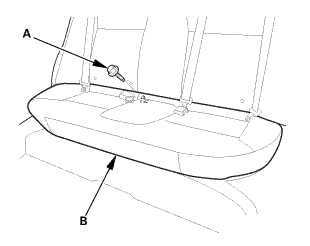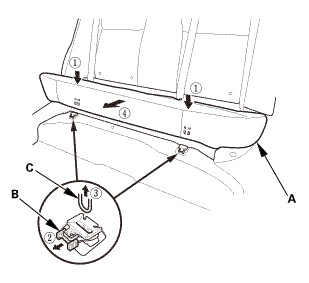Honda Civic Service Manual: Fuel Tank Scrapping (R18A9)

|
NOTE: The fuel tank must be replaced 15 years after its production date. |
| 1. | Vehicle Lift |
|
| 2. | Fuel Pressure - Relieving (At the fuel tank (If the engine does not start)) (Natural Gas Model) |
|
|
Compressed natural gas is flammable and highly explosive. You could be
killed or seriously injured if leaking natural gas is ignited.
|
|
|
|
||||||||||||||||||||||||||||||||||
|
|
|
|
|
|
|||||||||||||||||||||||||||||||||
| 3. | Fuel Purge<CNG> |
|
| 4. | Fuel Pressure - Relieving (Between the fuel tank and the engine) (Natural Gas Model) |
|
|
Compressed natural gas is flammable and highly explosive. You could be
killed or seriously injured if leaking natural gas is ignited.
|
| 5. | Rear Floor Undercover (Natural Gas Model) |
|
|
|
| 6. | Fuel Pipes at the Fuel Joint Block (Natural Gas Model) |
|
|
|
||||||
| 7. | Lower The Vehicle On The Lift |
|
| 8. | Left Rear Door Panel Assembly (Natural Gas Model) |
|
|
|
|
|
|
| 9. | Rear Seat Cushion |
|
|
|
|
|
|
| 10. | Center seat belt buckle bolt |
|
|
|
| 11. | Rear Seat-Back (Natural Gas Model) |
|
|
|
|
|
|
|
|
|
| 12. | Both C-Pillar Trims |
|
|
|
||||||||||||
|
|
|
| 13. | Rear Shelf (Natural Gas Model) |
|
|
|
|
|
|
|
3. |
Pull out both rear seat belts (A) and the rear center seat belt (B) through the slits in the rear shelf trim (C), then remove the rear shelf trim. |

| 14. | Trunk Floor Lid (Natural Gas Model) |
|
|
|
| 15. | Trunk Front Trim Panel (Natural Gas Model) |
|
|
|
| 16. | Fuel Tank Protector (Natural Gas Model) |
|
|
|
| 17. | Rear Bulkhead Gusset Both Sides (Natural Gas Model) |
|
|
|
| 18. | Rear Parcel Cover (Natural Gas Model) |
|
|
|
| 19. | Rear Shelf Gusset Both Sides (Natural Gas Model) |
|
|
|
| 20. | Rear Floor Upper Crossmember Gusset (Natural Gas Model) |
|
|
|
| 21. | Fuel Tank Assembly (Natural Gas Model) |
|
|
|
|
|
|
|
|
|
|
|
|

| 1. | Fuel Tank - Disposal<CNG> |
|
 Fuel Tank Removal and Installation (R18Z1)
Fuel Tank Removal and Installation (R18Z1)
1.
Fuel Filler Cap
1.
Remove the fuel fill cap to relieve the pressure in the fuel
tank.
...
 Fuel Tank Undercover Removal and Installation
Fuel Tank Undercover Removal and Installation
8131H7
1.
Vehicle Lift
1.
Raise the vehicle on a lift, and make sure it is securely supported.
...
See also:
Honda Civic Owners Manual. Traffic and Weather Information
You can receive traffic and weather information.
To set up a traffic & weather information
1. Select .
2. Select Settings.
3. Select Audio.
4. Select Traffic & Weather Setup.
5. Select the region.
When you do not want to receive the information, select Unregistered.
...







 n-mn
n-mn
























